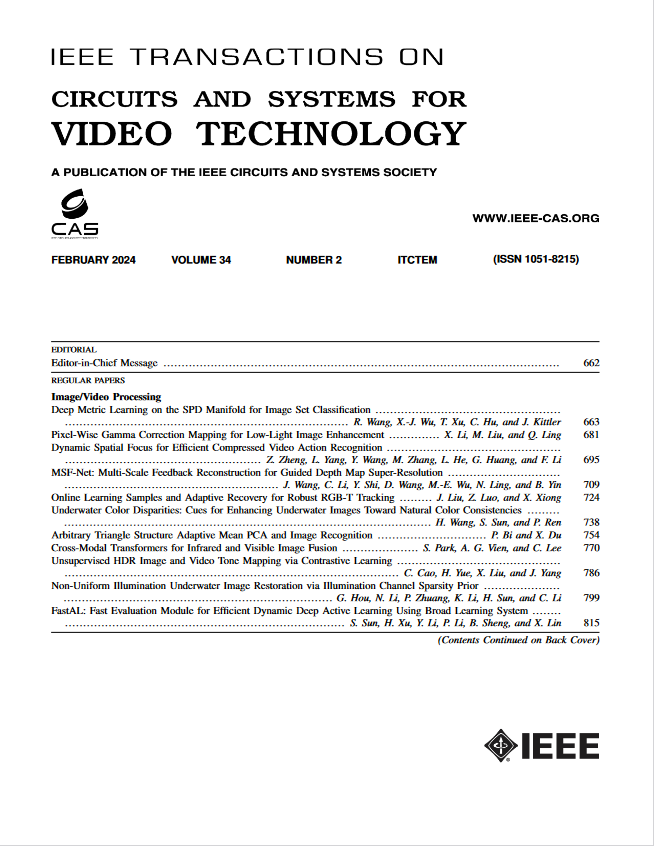Monocular Depth Estimation on Adverse Weathers With Curriculum Domain Distribution Alignment
IF 8.3
1区 工程技术
Q1 ENGINEERING, ELECTRICAL & ELECTRONIC
IEEE Transactions on Circuits and Systems for Video Technology
Pub Date : 2024-09-09
DOI:10.1109/TCSVT.2024.3456097
引用次数: 0
Abstract
Despite the remarkable success of monocular depth estimation, most works focus on ideal experiment conditions, such as favorable weather, where there is few environmental factors impacting the depth estimation system. In practical, when suffering from adverse weather conditions, such as fog and rain, the model trained on favorable weather degrades sharply as the domain shift, caused by the decreasing of visibility. To solve this problem, in this paper, we propose a Curriculum Domain Distribution Alignment (CDA) algorithm to learn the domain-invariant representation, progressively aligning data distributions across favorable weather and adverse weather in the feature space. Concretely, to construct a domain adaptation curriculum, we first separate the target domain into several subsets with increased domain discrepancy based on an optical model. Then, we bridge the distribution discrepancy between domains from easier to harder data by matching the source and target representation subspace. Furthermore, to control the distribution aligning pace, we introduce self-paced learning to learn a dynamic domain adaptation weight, promoting the generalization ability of monocular depth estimation networks against environmental factors. We conduct experiments with six monocular depth estimation frameworks on FoggyCityScapes, RainCityScapes, SnowCityscapes, and All-day Cityscapes, improving RMSE with 8.5 %, 30.5 %, 30.9 %, 20.9 %. The extraordinary performance demonstrates the effectiveness and generalizability of our method under adverse weather conditions.利用课程域分布对齐在恶劣天气下进行单目深度估计
本文章由计算机程序翻译,如有差异,请以英文原文为准。
求助全文
约1分钟内获得全文
求助全文
来源期刊
CiteScore
13.80
自引率
27.40%
发文量
660
审稿时长
5 months
期刊介绍:
The IEEE Transactions on Circuits and Systems for Video Technology (TCSVT) is dedicated to covering all aspects of video technologies from a circuits and systems perspective. We encourage submissions of general, theoretical, and application-oriented papers related to image and video acquisition, representation, presentation, and display. Additionally, we welcome contributions in areas such as processing, filtering, and transforms; analysis and synthesis; learning and understanding; compression, transmission, communication, and networking; as well as storage, retrieval, indexing, and search. Furthermore, papers focusing on hardware and software design and implementation are highly valued. Join us in advancing the field of video technology through innovative research and insights.

 求助内容:
求助内容: 应助结果提醒方式:
应助结果提醒方式:


